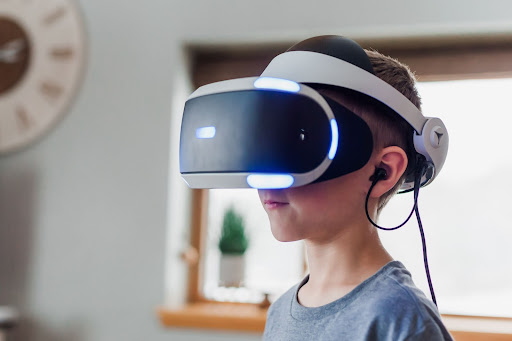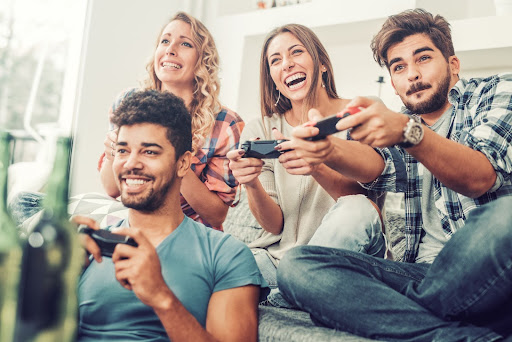
You’re probably familiar with the concept of gamification—the use of game mechanics and interactive elements to engage learners and motivate them to learn. You may also have heard that games are becoming more prevalent in the workplace. But what does all this mean for players? What makes a game “good” or “bad” for training? And why do we enjoy games so much? In this article, I’ll explore these questions.
Game-based Learning and Gamification have Evolved Over Time
The term “gamification” can be used in many contexts. Originally, it was a broad term that meant making something more game-like. In this sense, gamification is an umbrella term for both game-based learning and games used to teach or train people; however, the term has evolved over time and now refers almost exclusively to using games in education (and sometimes business).

Gamification, of course, includes game-based learning and other things – like using badges on social media sites – that aren’t necessarily about creating content for learners’ benefit.
Related Article: 3 Powerful Benefits Of Gamification In Training And Development Processes
Why Do We Enjoy Games?
Why do we enjoy games? Why do we play them?
It’s a question that has been asked many times. And there are plenty of theories, but one thing is for sure: games can be fun, challenging and social. In addition to that, games help us relax and escape from the real world. A game allows us to be in control and creative—all things we crave as humans! Let’s have a look at some of these ideas in more detail and see how they apply to gaming specifically.
a. The Psychology of “flow”
You might be familiar with the psychology of gaming but not be familiar with the term “flow,” but you certainly know what it feels like. It’s the feeling of being completely immersed in a task and losing track of time. It’s when a game is so good that you forget to eat or sleep while playing. Flow is an important psychological state: it can increase motivation, engagement, and retention. These benefits are especially important for games because they rely on these properties to compete against other entertainment options (like television).
Many studies show that flow positively affects players’ decisions about whether or not to continue playing the game in question—even when those decisions aren’t necessarily rational (i.e., buying something after playing for free).
b. Game Mechanics
Game mechanics are the rules and systems of a game. They’re what make you want to keep playing; they provide satisfaction, and keep you coming back for more. Game mechanics are also why play video games, spend money, and spend countless hours playing them (even when you know you should be doing something else).
Let’s look at some examples:
Consider Tetris; the game mechanic is simple: match four blocks that fall from above before they reach the bottom of your screen. If three or more pieces form a line, all of those pieces disappear from play, allowing new ones to fall in their place. As long as new pieces are falling down onto an ever-filling grid below your character’s feet—and this rarely stops—you must keep playing until either your screen fills up with blocks or all possible matches have been made; if both happen simultaneously, then it’s game over!
c. Just How Important is Motivation?
Motivation is a key factor in learning, performance and retention. It’s also a factor in engagement. And that’s not all! Motivation to play video games is also important for enjoyment.
Motivation can be defined as the degree to which people who play games are internally or externally directed to do something. In other words, we’re motivated when we do something because it pleases us or makes us feel good about ourselves (internally driven) or when we do something because others expect us to do it (externally driven).
- Internally Driven: An internally driven person does things out of personal interest rather than external factors like rewards or punishments. For example, if you’re interested in playing video games because they’re fun and entertaining—and not just because your parents won’t let you play unless you study—then you’re an internally-driven person who feels rewarded by gameplay itself instead of by external factors such as money or grades.

- Externally Driven: An externally-driven person will only engage with something if there’s some kind of reward involved; otherwise, they won’t bother doing anything! If this sounds like someone who plays video games strictly for bragging rights instead of having fun, then maybe that person just needs some motivation!
Related Article: 5 Ways to Gamify Learning With Modest Budgets
Final Thoughts
The more we learn about motivation to play video games and how it affects people, the better we can design fun and effective games. If you’re looking for ways to make eLearning more enjoyable, keep these tips in mind—and experiment with them! You might be surprised at how quickly they pay off.
Visit eVULX for more gamified solutions.
9.08 & 9.09, Block E Phileo Damansara 1,
9, Jalan 16/11, 46350 Petaling Jaya, Selangor
Telephone: +60122254456
Email: [email protected]
(202001021557) (1377877-X)
All Rights Reserved


